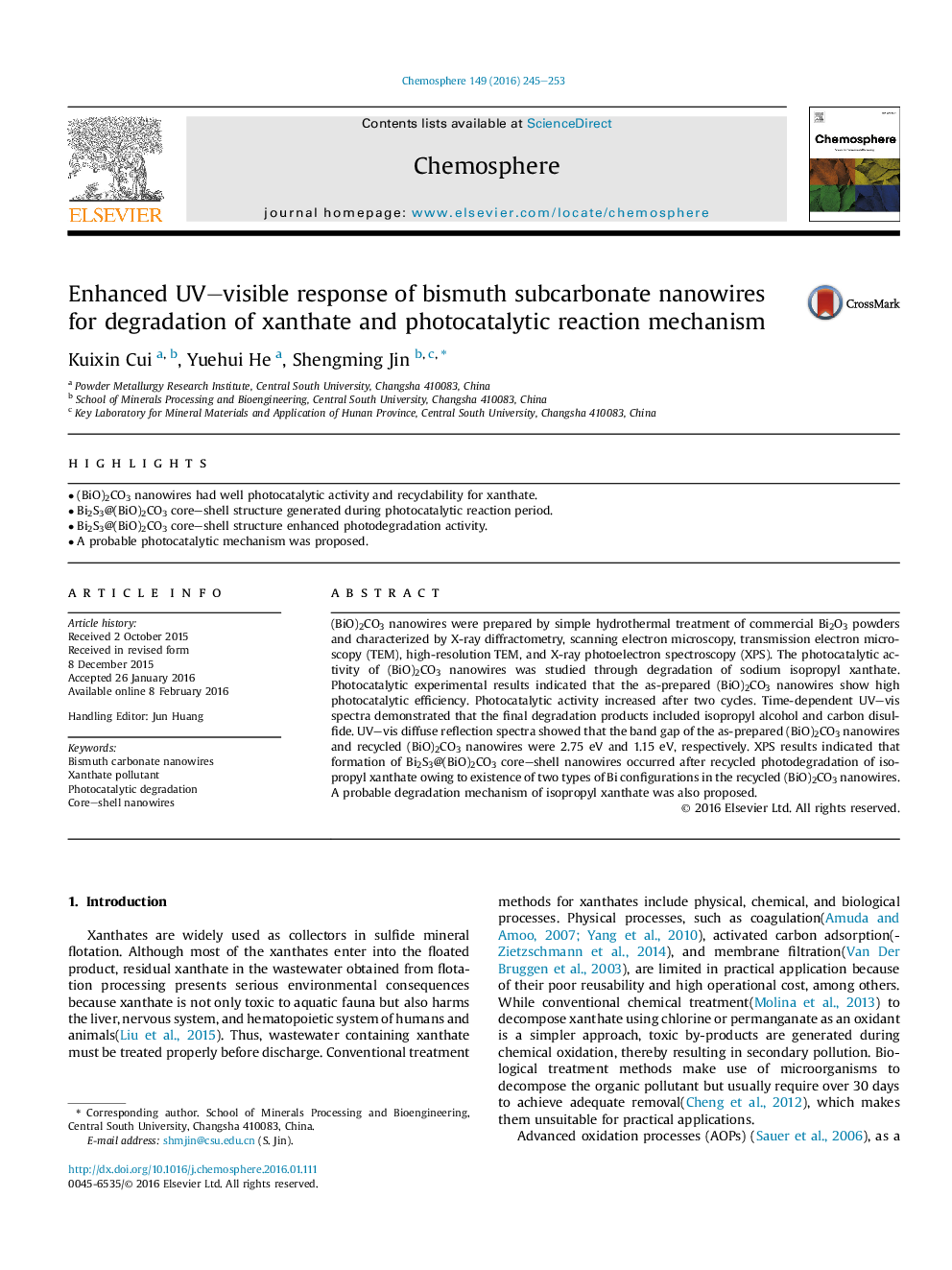| Article ID | Journal | Published Year | Pages | File Type |
|---|---|---|---|---|
| 4407917 | Chemosphere | 2016 | 9 Pages |
•(BiO)2CO3 nanowires had well photocatalytic activity and recyclability for xanthate.•Bi2S3@(BiO)2CO3 core–shell structure generated during photocatalytic reaction period.•Bi2S3@(BiO)2CO3 core–shell structure enhanced photodegradation activity.•A probable photocatalytic mechanism was proposed.
(BiO)2CO3 nanowires were prepared by simple hydrothermal treatment of commercial Bi2O3 powders and characterized by X-ray diffractometry, scanning electron microscopy, transmission electron microscopy (TEM), high-resolution TEM, and X-ray photoelectron spectroscopy (XPS). The photocatalytic activity of (BiO)2CO3 nanowires was studied through degradation of sodium isopropyl xanthate. Photocatalytic experimental results indicated that the as-prepared (BiO)2CO3 nanowires show high photocatalytic efficiency. Photocatalytic activity increased after two cycles. Time-dependent UV–vis spectra demonstrated that the final degradation products included isopropyl alcohol and carbon disulfide. UV–vis diffuse reflection spectra showed that the band gap of the as-prepared (BiO)2CO3 nanowires and recycled (BiO)2CO3 nanowires were 2.75 eV and 1.15 eV, respectively. XPS results indicated that formation of Bi2S3@(BiO)2CO3 core–shell nanowires occurred after recycled photodegradation of isopropyl xanthate owing to existence of two types of Bi configurations in the recycled (BiO)2CO3 nanowires. A probable degradation mechanism of isopropyl xanthate was also proposed.
